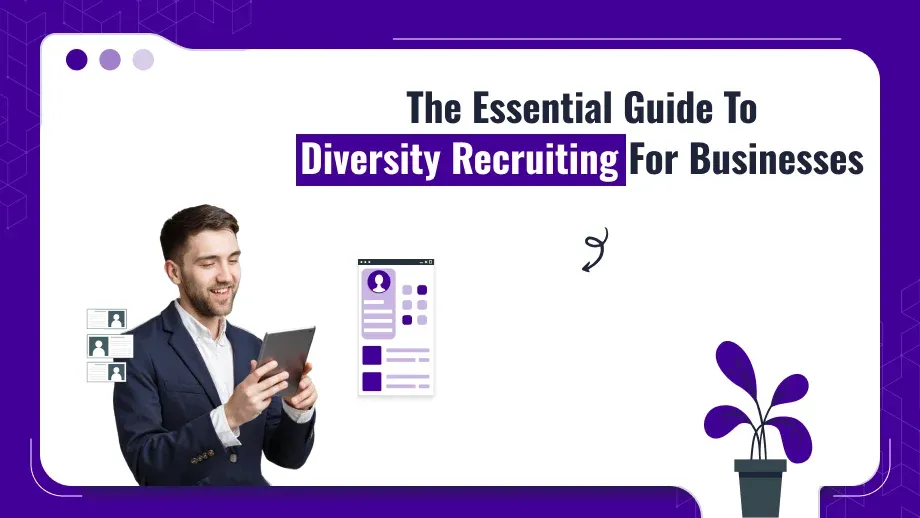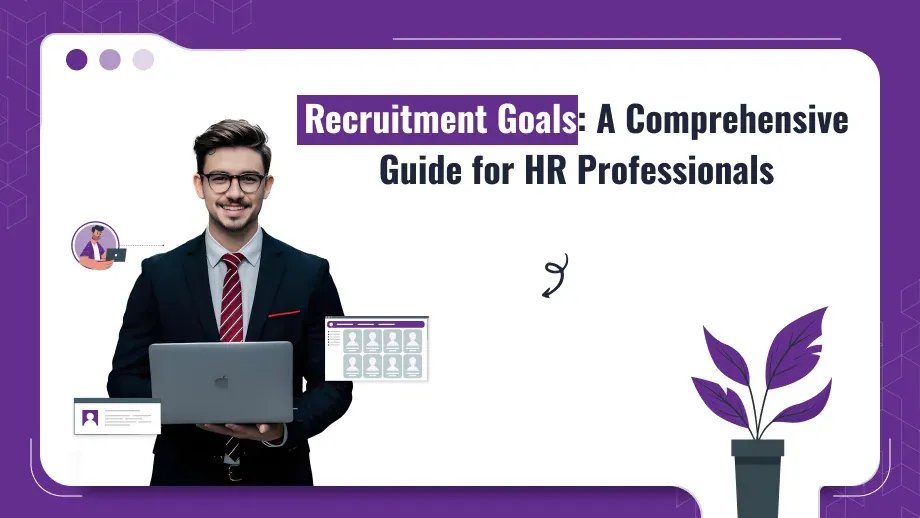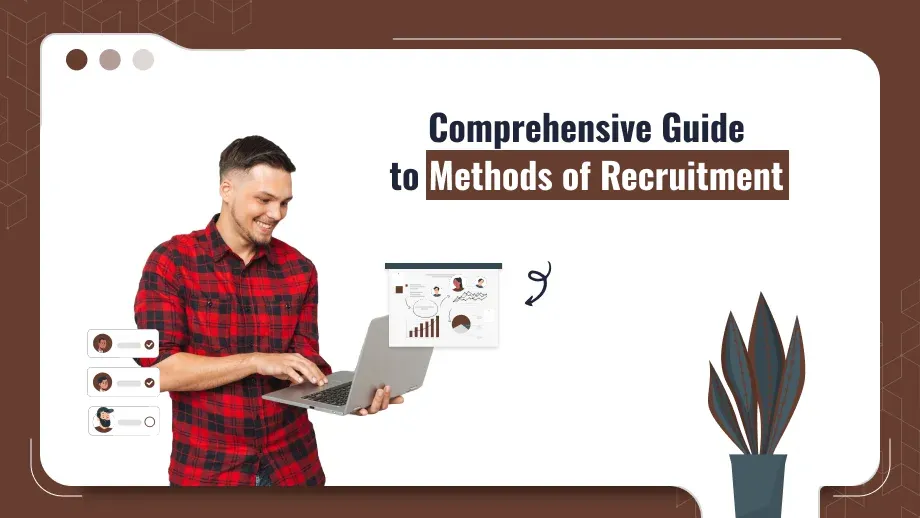
Diversity recruiting advances the competitiveness within an organization, and recruiting from diverse talent pools rests on the foundation of that reality. Recruiting and hiring a balanced workforce is not about trying to meet some quota; it is the process of aggregating a talent pool around which different people, experiences, and perspectives are prioritized in an inclusive workplace, fosters innovation, strengthens resilience, and expands market reach-positioning the organization as a strong, competitive player in the marketplace.
We will outline in this guide the core steps, strategies, tools, and benefits of diversity recruiting compared to traditional recruiting. This guide includes some of the problems that may be encountered and how best to conquer them in a thriving, inclusive workplace.
What is Diversity Recruiting?
Diversity recruiting is essentially a proactive approach to recruiting which refers to attracting people with different backgrounds in terms of race, gender, age, nationality, disability, etc. Unlike traditional methods of recruiting that happen to favor certain groups, recruitment for diversity emphasizes inclusiveness so that everybody gets a fair shot at the hiring process.
Diversity recruitment is, in short, the commitment to having a workforce similar to the society within which we live. Everyone brings a unique blend of skills and experiences to the table. Diversity in hiring is not quota filling – it means creating a climate of belonging, innovation, and strength in organizations.
The Best Ways to Retain Diverse Workforce
Recruiting diverse talent is the most important first step, but retention is equal and even more important to maintain diversity. Only if organizations provide an environment that gives value, support, and power to all workers will they really thrive. Effective strategies to retain a diverse workforce and see that diversity efforts go beyond hiring include.
Foster an Inclusive Culture
Retaining a diverse workforce becomes possible only by creating an inclusive culture where respect and value towards employees from different backgrounds increase the chances of their staying and delivering positively.
Actionable Tips: Open dialogue, cultural events, educating the teams on the importance of inclusivity through diversity training, and conducting workshops to understand the concept of diversity at work and foster respect for one another.
Offer Equal Growth Opportunities
Because diversity encourages variation within an organization, all ranks of the workforce must face equal career advancement opportunities. The diverse employees must have development programs and mentorship and leadership training to promote their growth within the organization.
Actionable Tips: Implement a fair criteria promotion, mentorship program, and talent management system to monitor the development needs and progress of the employee. This means that every employee is given the chance at fair promotion.
Establish Employee Resource Groups
ERGs are a means of creating the community and sense of belonging that diverse employees need. Such groups are set up to facilitate networking, sharing of difficult moments, and advocacy for employees who share a specific background or interest and thus could be brought together in a particular workplace.
Actionable Tips: ERGs should be established around the different demographics from which employees identify, such as racial diversity, gender diversity, or nationality diversity. Support should be provided and resources allocated to ERGs, thereby empowering participation and leadership.
Provide Flexible Work Options
Flexible work options such as telecommuting or flexible hours attract diverse talent; they allow for handling a wide range of different needs and lifestyles. Flexibility promotes workforce diversity because it responds to every employee’s situation, including family needs or health.
Actionable Tips: Implement more remote work options, flexible schedules, and hybrid models to accommodate different needs. Communicate those options clearly during onboarding and recruitment for diversity to attract and retain a wider range of candidates.
Recognize and Reward Contributions
Lastly, acknowledging all the employees is one way of creating a positive and more diverse environment. Diversification of the workforce for their achievements shows that the organization appreciates the work and efforts.
Actionable Tips: Develop a formal recognition program that incorporates both achievements and milestones, with success stories highlighted by the department so that there are multiple voices across the entire company represented.
Regularly Measure and Improve Diversity Initiatives
The metrics need to be tracked to see if the diversity initiatives implemented in the workplace are working. The retention rates, employee satisfaction, and other diversity metrics need to be reviewed consistently to know where issues exist and also to make improvements.
Actionable Tips: Use Talent Management Systems and Applicant Tracking Systems to track diversity metrics. Seek feedback from employees by completing an annual review of all diversity programs; analyzing their effects on retention and identifying opportunities for improvement.
Address Unconscious Bias through Training
Unconscious bias can affect interactions, performance evaluations, and career growth. Providing training to help employees recognize and address biases promotes a fair, inclusive environment, essential for retaining a diverse workforce.
Actionable Tips: Conduct regular bias training for employees at all levels. Include scenarios that illustrate how bias can impact diversity in the workplace and equip employees with tools to address it constructively.
Create Clear Career Paths and Development Opportunities
Strong, clear, challenging, and attainable career paths help to hold diverse workforces together. Employees who are convinced of good opportunities for advancement within the organization will stay engaged.
Actionable Tips: Develop a career development plan for all employees that outlines potential ways to advance and the skills required. Use talent mapping software to identify high-potential candidates and create diverse pipelines.
Engage in Open Communication and Solicit Feedback
Basically, trust is formed through regular and open communication. That way, employees can freely speak about their needs and concerns. By seeking feedback actively, firms give the message that they respect the diversity of views represented by the ethnically diverse workforce.
Actionable Tips: Anonymous survey, monthly feedback, and setting up and promoting safe spaces; policies can be adjusted according to feedback to assure employees of commitment by the company for continuous improvement in supporting diversity in the workplace.
Support Work-Life Balance
Work-life balance is especially critical in keeping an array of workforces. A balanced work life can prevent burnout, which is important for long-term retention and satisfaction.
Actionable Tips: Provide wellness initiatives, mental health days, and flexible time off. Inform managers to encourage worker’s balance between work responsibilities and other family, cultural obligations, or personal healthcare requirements.
How to Recruit Diverse Candidates: A Step-by-Step Guide
Building a diverse workforce involves a strategic approach. Here are the key steps in an effective diversity recruiting process:
Define Diversity Goals and Metrics
Set clear, measurable diversity goals, aligned with the values of the organization and the business objectives. Define what diversity looks like for your organization, areas to focus on, and measures for improvement. This first move sets a basis for focused and achievable diversity recruitment strategies, such as representation of specific demographics or achieving a specific team composition balance.
Expand Talent Pools
To reach a diverse range of candidates, expand your talent-sourcing efforts beyond traditional channels. This may include connecting with community organizations, engaging with diverse professional associations, or building partnerships with educational institutions that serve underrepresented groups. By broadening talent sources, you increase the likelihood of building a more diverse talent pipeline for recruiting.
Create Inclusive Job Descriptions
Create job descriptions that are diverse and attractive to a diverse group of applicants. Avoid phrases, words, and industry-specific terminology that speak directly to one gender but, by exclusion, eliminate applicants from more diverse fields. Describe the company’s commitment to diversity and inclusion, reflecting the importance of not leaving work in general and specifically at the place of work. This can help foster recruitment for diversity as an outcome of making sure that job ads are not only open but inclusive.
Implement Fair and Structured Interview Processes
Using a standardized interview process is key to fair evaluations in diversity recruiting. Structured interviews that assess candidates on consistent criteria help reduce bias and provide an equal playing field for all applicants. Including diverse interview panels can further enhance objectivity in the selection process.
Review and Analyze Diversity Metrics
Tracking diversity metrics is essential to know what’s happening or not happening. Companies can refine strategies in diversity recruitment thanks to applicant-tracking systems or talent mapping software, which help them monitor applicant demographics, hiring rates, and retention statistics.
Diversity recruiting should be empowered!
Attract unique talent and build an inclusive team with our streamlined recruiting tools.
Strategies to Enhance Diversity Recruiting
The right strategies make it more effective and sustainable. These include:
Building Partnerships with Diverse Organizations
Partner with educational institutions, nonprofit organizations, and diversity-focused groups to source candidates from larger pools. This partnership solidifies diversity in hiring by connecting companies to previously untapped sources of underrepresented talent.
Utilizing Employee Referral Programs for Diversity
Through employee referral programs, diverse referrals can be encouraged. Organizations can expand their talent pool and support recruitment for diversity by encouraging employees to refer candidates from underrepresented backgrounds.
Utilizing Digital Tools and Platforms
Diversity recruiting tools include talent management systems and pipeline recruitment platforms. They can efficiently make the processes of hiring easier and better. These help recruiters reach diverse talent sources via various channels and also track how the hiring process can be optimized.
Promoting a Strong Employer Brand
Emphasize inclusion and diversity in employer branding. A diverse and inclusive workplace will attract applicants the most. Valid, strong stories of diverse employees and diversity initiatives make a company more attractive in diversity recruiting.
Overcoming Challenges in Diversity Recruiting
While recruiting does deliver a lot of benefits, it is not without certain challenges. Here’s how to handle some of the main challenges in recruitment that you may encounter:
Unconscious Bias in Hiring
Then, there is the unconscious bias that in reality determines hiring choices. Thus, it may be substantially more challenging to attain diversity objectives. Have bias training for interviewers and apply structured interviews. Their impacts too can be neutralized by having diverse interview panels.
Limited Diverse Talent Pools
Other industries simply cannot source a large, diverse pool of talent. To help bridge that limitation, expand your search beyond the more traditional channels, build diversity-based partnerships with other organizations, and consider implementing applicant tracking systems that allow you to reach a broader cross-section of candidates.
Balancing Skills with Diversity Goals
While diversity needs to be encouraged, it is equally important that the skill requirements are fulfilled. Then you could use the talent mapping software to understand where the gaps are in the skills and attract candidates who bring both of the necessary skills and diverse backgrounds.
Measuring and Reporting on Diversity Progress
Diversity is a thing that should be tracked and reported in progress. Being able to pinpoint very tight metrics and review them regularly as well as make adjustments to diversity recruitment plans if necessary will be very effective. Transparent reporting demonstrates a commitment to diversity, which fosters trust and accountability.
Tools and Resources to Support Diversity Recruiting
Amongst them are several tools that could be undertaken to increase recruitment for diversity and make recruitment easier:
- Applicant Tracking Systems (ATS): This kind of solution will help manage the recruitment pipeline, and diversity metrics tracking and reduce bias of hiring through structured hiring practices.
- Talent Management System: An integrated talent management system helps with tracking employee progression, ensuring that diversity goals are maintained beyond hiring.
- Diversity Recruiting Tools: This helps with reaching out to diverse communities, managing pipelines for diverse candidates, and fair assessments at every step.
- HRMS Payroll Software in India: For businesses operating in India, Human Resource Management System Payroll has the functionality of employee data management, diversity metric tracking, and fair hiring practice compliance.
These diversity recruitment resources make hiring easier with less handwork and promote an inclusive, truly complete approach to recruiting.
Diversity Recruiting vs. Traditional Recruiting
Traditional recruiting often subtly discriminates in favor of certain groups simply because channels for sourcing talent are limited or prejudices are already present. A good recruiting approach is intentional and even more inclusive and aims to heterogeneity of both backgrounds and experiences. In prioritizing inclusivity, diversity recruiting strengthens the workforce; simultaneously, these objectives are aligned with broad organizational goals of equity, representation, and innovation.
Creating an inclusive culture to support diversity recruitment
Diversity recruitment works only when matched with an inclusive culture. Here are a few tips on how to have a more inclusive workplace that retains and supports all employees:
- Open and Cultural Awareness Dialogue: Promote the practice of employee sharing their experiences and learning about the diverse cultures prevailing within the organization.
- Training should be continuous: Employee and leaders’ training in diversity and inclusion will ensure a workplace that is understanding, respectful, and collaborative.
- Training should be continuous: Employee and leaders’ training in diversity and inclusion will ensure a workplace that is understanding, respectful, and collaborative.
Building an inclusive culture supports not only these but also employee satisfaction and retention.
Conclusion
Diversity recruiting is an investment in organizational resilience and growth. Diverse, inclusive teams promote creativity, increase markets for consumers, and lead to better decisions. With integrated diversity recruiting tools, tracking metrics through diversity recruitment resources, and creating inclusive cultures, companies bring diversity to the center of workforce strategy. Tools like HRMS Payroll Software in India help to manage diversity metrics and workforce data seamlessly.






